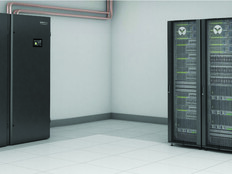ARPA-E Says It Has Found Battery Technology 'Holy Grail'
The research arm of the U.S. Department of Energy has made several breakthroughs that could fundamentally change battery and energy-storage technology, according to the unit’s chief.
Ellen Williams, director of department’s Advanced Research Projects Agency-Energy (ARPA-E), gave few details on the breakthroughs the agency has made through its research and investments but described them as game-changers in the energy market. Entrepreneurs and philanthropists such as Bill Gates and Elon Musk have been pursuing advances in energy-storage technology.
“I think we have reached some holy grails in batteries — just in the sense of demonstrating that we can create a totally new approach to battery technology, make it work, make it commercially viable, and get it out there to let it do its thing,” Williams told the Guardian last week on the sidelines of ARPA-S annual gathering of researchers and investors.
ARPA-E was founded in 2009 as part of the Obama administration’s economic stimulus plan and is similar in many respects to the more well known Defense Advanced Research Projects Agency (DARPA) of the Defense Department.
Williams said the most major advance has been in energy storage. “I think that’s one area where we have delivered big time,” she said. Williams added that the battery storage systems that have been developed through ARPA-E could radically reshape the United States energy grid in the next five to 10 years.
According to the Guardian, Williams said projects funded by ARPA-E could potentially alter utility-scale storage systems and lead to increased use of of micro-grids by the military and for disaster relief. She also said ARPA-E projects were focused on creating faster and more efficient superconductors, and relying on new materials beyond traditional lithium-ion batteries. That could help bring down the cost of energy storage, which will become more necessary as utility companies bring more solar and wind power online.
“Our battery teams have developed new approaches to grid-scale batteries and moved them out,” Williams said.








